FAQ - Advanced Bathroom Queries
How Much Does Flushing a Toilet Use
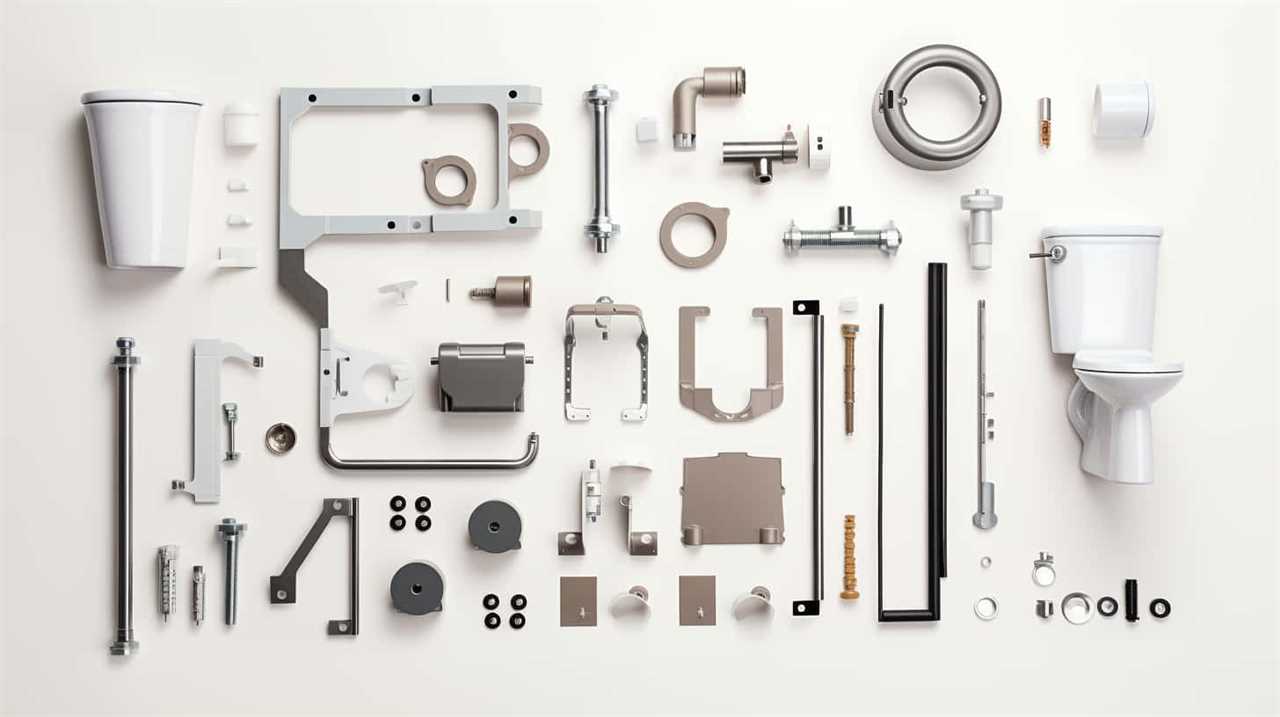
Ah, the modest act of flushing a toilet.
We hardly give it a second thought, yet it plays a significant role in our daily water consumption.
Ever wondered just how much water we use every time we flush?
In this article, we delve into the fascinating world of toilet water usage, exploring the factors that affect it, the technologies that can save it, and the impact it has on our water bills.
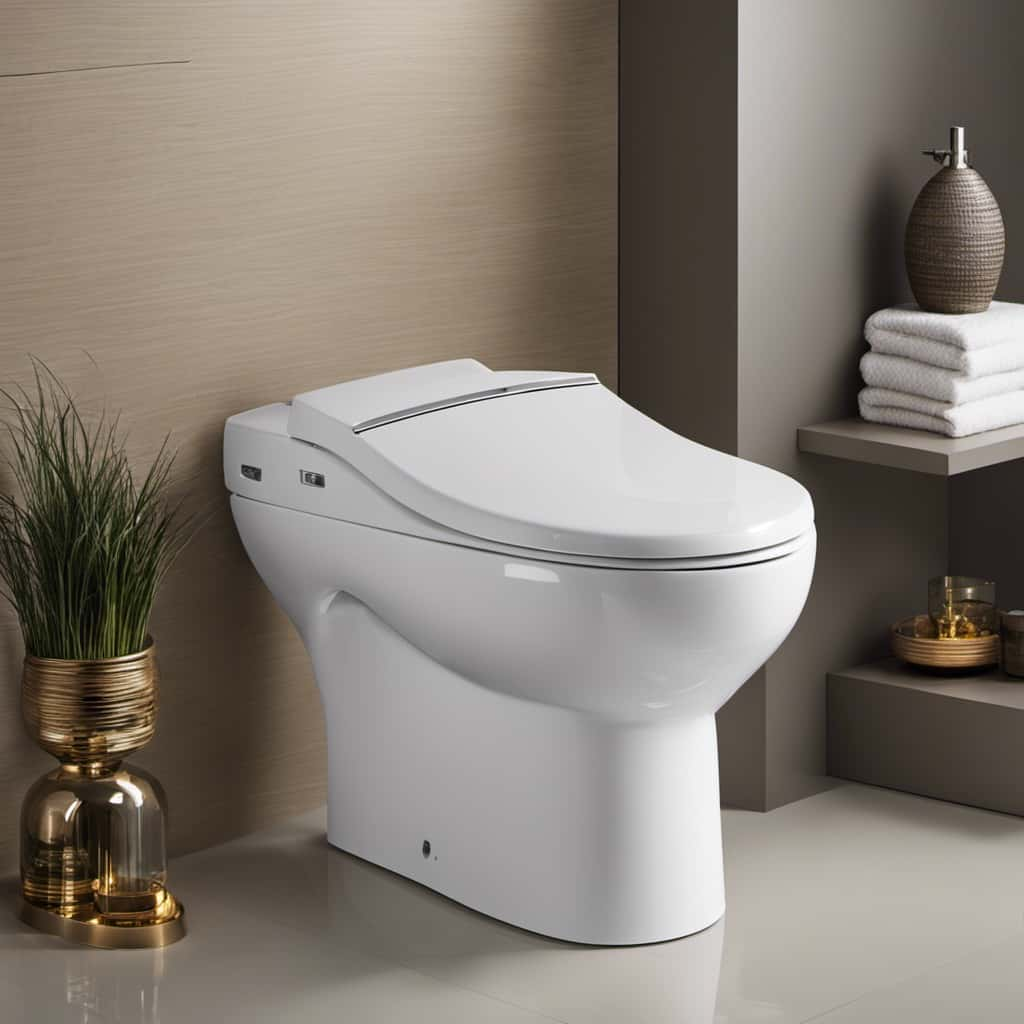
So buckle up and prepare to master the art of water conservation with us.
Key Takeaways
- Dual-flush toilets and low-flow toilets are water-saving options that can significantly reduce water usage per flush.
- Upgrading to water-saving toilets can lower water bills by decreasing water consumption.
- Excessive water usage can lead to environmental consequences such as water scarcity, habitat loss, and pollution.
- Tips for reducing water consumption include using low-flow fixtures, fixing leaks promptly, and practicing responsible irrigation.
Average Water Usage per Flush
Our toilets’ average water usage per flush is an important consideration in conserving water and reducing our environmental impact. When it comes to the comparison of toilet designs, the amount of water used during each flush can vary significantly. Traditional gravity-flush toilets, for instance, typically use around 1.6 gallons (6 liters) of water per flush. On the other hand, high-efficiency toilets (HETs) use only 1.28 gallons (4.8 liters) of water per flush, making them a more water-conscious choice.
But it’s not just the design of the toilet that affects water usage. The impact of water pressure also plays a role. In areas with low water pressure, toilets may require more water to effectively flush waste. This can result in higher water usage per flush compared to areas with higher water pressure. It’s worth noting that some modern toilets are designed to work efficiently even with low water pressure, ensuring optimal flushing performance while minimizing water usage.
Factors That Affect Water Consumption
Toilet water consumption is influenced by various factors. Understanding these factors can help households determine their average water usage and implement water conservation methods effectively. Here are three key factors that affect water consumption in toilets:
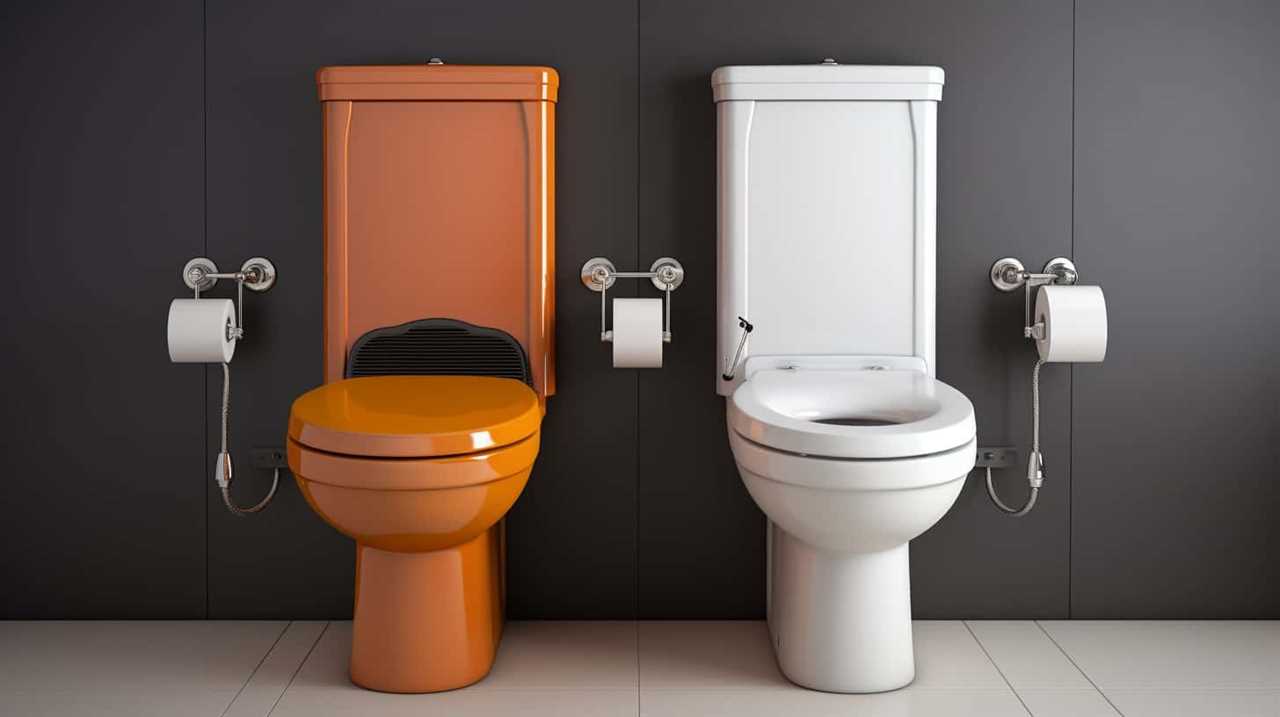
| Factor | Description | Impact on Water Consumption |
|---|---|---|
| Flush volume | The amount of water released per flush | Higher flush volumes result in more water consumption |
| Flush frequency | The number of times a toilet is flushed per day | More frequent flushing leads to higher water usage |
| Toilet age | The age of the toilet and its internal mechanisms | Older toilets may have less efficient flushing systems, resulting in higher water consumption |
By considering these factors, households can estimate their average water usage and identify areas for improvement. Implementing water conservation methods such as replacing older toilets with newer, water-efficient models, using dual flush toilets, or installing toilet tank displacement devices can significantly reduce water consumption. Additionally, households can practice responsible flushing habits by avoiding unnecessary flushes and repairing any leaks promptly.
Understanding the factors that influence water consumption in toilets is crucial for households aiming to reduce their water usage. In the following section, we will compare the water usage of different toilet models to provide further insights into water conservation measures.
Comparison of Water Usage in Different Toilet Models
When comparing different toilet models, it’s important to consider water-saving options, as they can significantly reduce water consumption.
These options include dual flush toilets, which have separate buttons for liquid waste and solid waste, allowing for more efficient water usage.

Additionally, low-flow toilets use less water per flush, helping to minimize the environmental impact of flushing.
It’s also worth considering the cost of water consumption when choosing a toilet model, as using less water can lead to long-term savings on water bills.
Water-Saving Toilet Options
We compared the water usage of different toilet models to find out how much water-saving toilet options can save. Water-saving toilet innovations have become increasingly popular due to their numerous benefits and the growing awareness of water conservation.
These toilets are designed to use less water per flush compared to traditional models, helping to reduce water consumption and lower utility bills. By incorporating efficient flushing mechanisms, such as dual-flush or pressure-assisted systems, water-efficient toilets can significantly decrease the amount of water used per flush, while still maintaining effective waste removal.
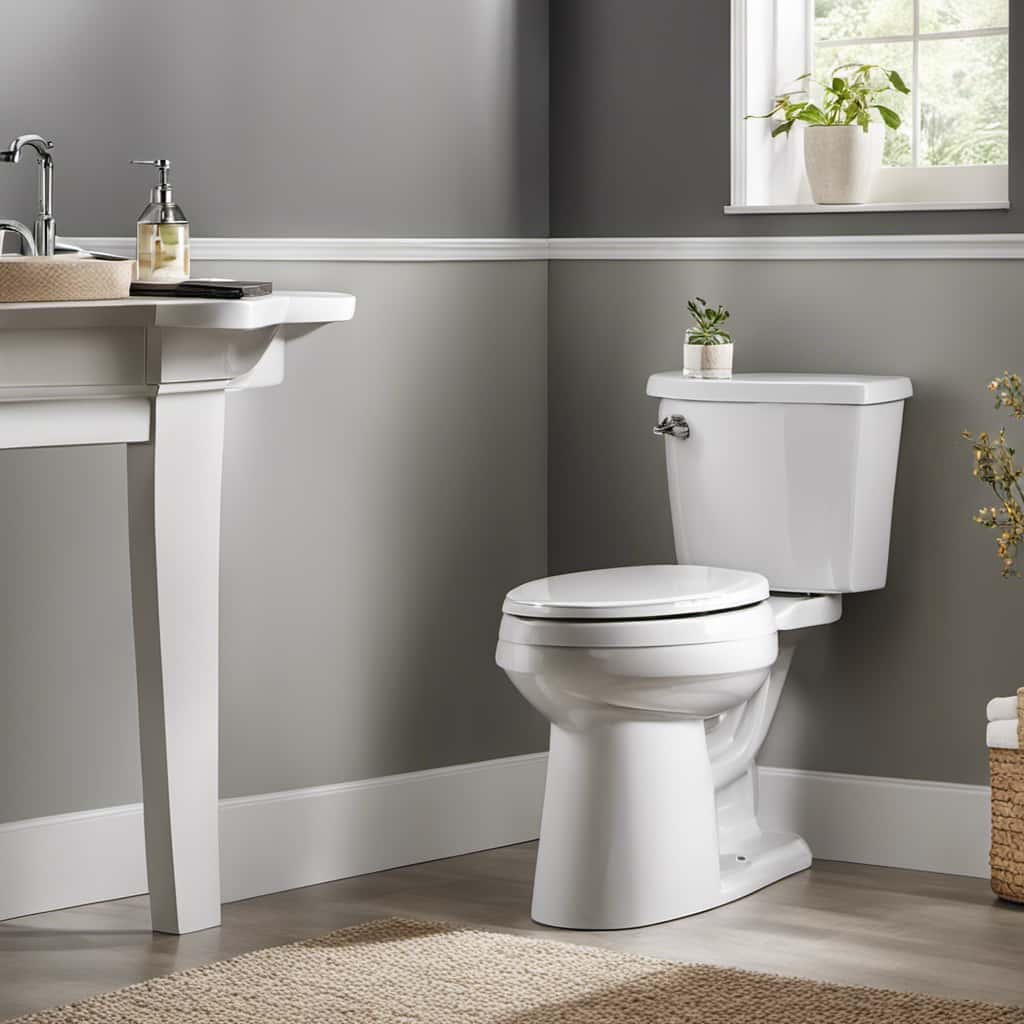
Additionally, water-saving toilets often meet or exceed water efficiency standards set by organizations such as the Environmental Protection Agency (EPA) and can contribute to a more sustainable and environmentally-friendly home.
Environmental Impact of Flushing
By incorporating efficient flushing mechanisms, such as dual-flush or pressure-assisted systems, water-saving toilets significantly decrease water usage per flush while still effectively removing waste. These water-saving toilet innovations are designed to minimize the environmental impact of flushing.
Here are a few water conservation methods utilized by these toilets:
- Dual-Flush System: This mechanism allows users to select a full flush for solid waste or a reduced flush for liquid waste, reducing water usage.
- Pressure-Assisted System: This system uses compressed air to forcefully propel water into the bowl, ensuring efficient waste removal with less water.
- Low-Flow Technology: Water-saving toilets also employ low-flow technology, limiting the amount of water used per flush without compromising performance.
These advancements in water-saving toilet technology play a vital role in conserving water resources and promoting sustainable practices in our daily lives.
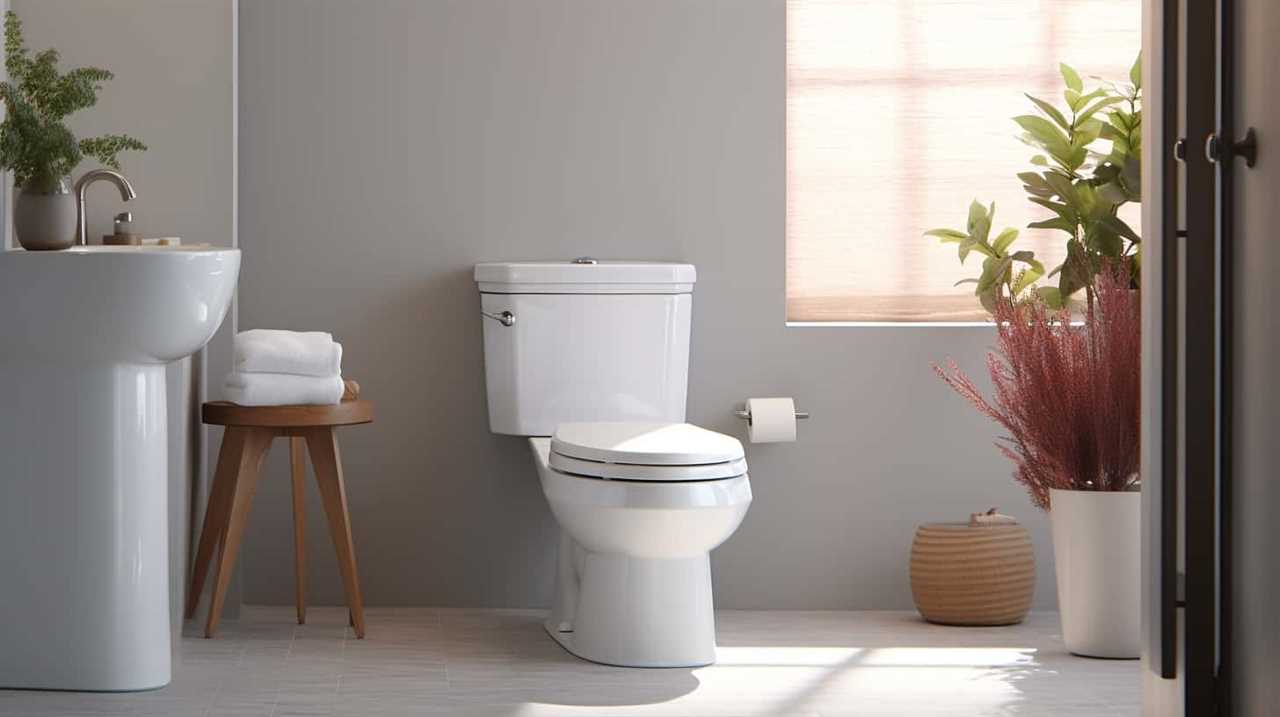
Cost of Water Consumption
To continue our discussion on the environmental impact of flushing, let’s now explore the cost of water consumption by comparing the water usage of different toilet models.
When it comes to cost saving measures, it’s important to consider how much water each toilet uses and the potential impact on the household budget. Traditional toilets typically use around 3.5 to 7 gallons of water per flush, which can lead to significant water bills over time.
However, newer models, such as low-flow toilets, have been designed to use only 1.6 gallons of water per flush, resulting in considerable water savings. Some advanced toilets even have dual flush options, allowing users to choose between a full flush or a half flush, further reducing water usage.
Water-Saving Technologies and Their Effectiveness
While water-saving technologies have been implemented to reduce the amount of water used in flushing toilets, their effectiveness varies. These water-saving innovations play a crucial role in promoting sustainable water consumption and reaping the benefits of water conservation. Here are some key points to consider:
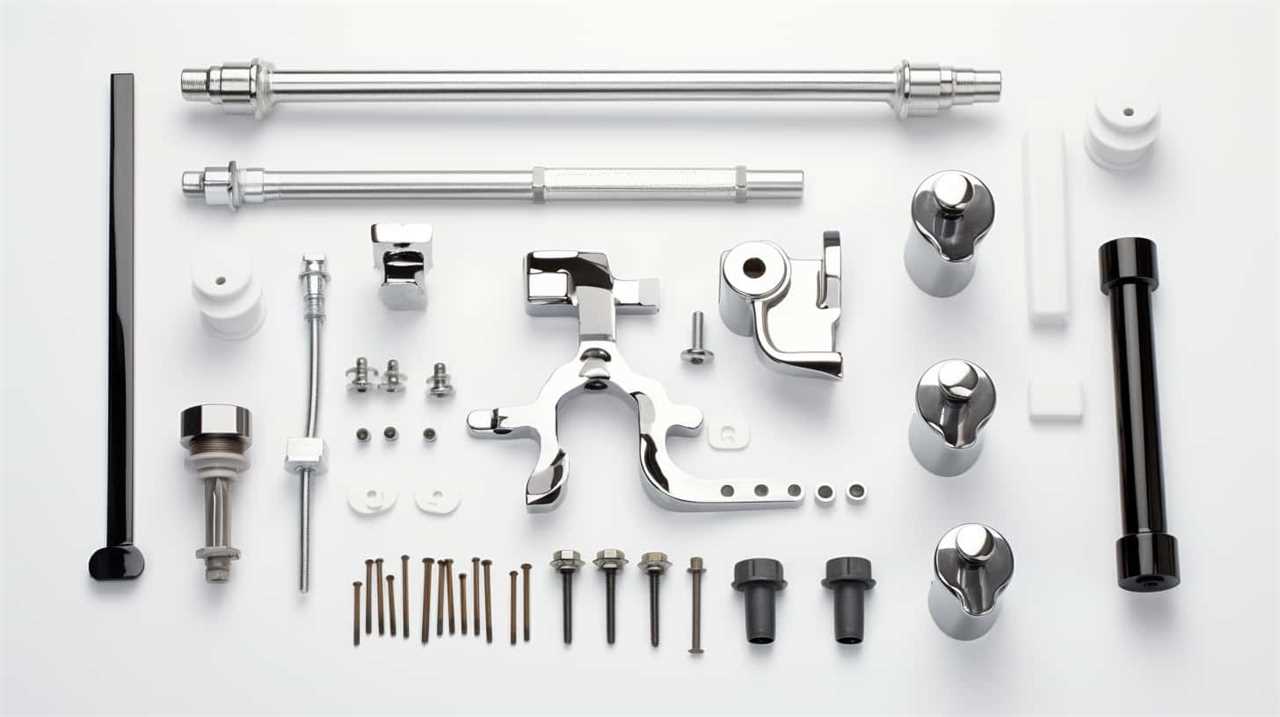
- Dual-flush toilets: These toilets offer two flushing options – a full flush for solid waste and a half flush for liquid waste. By giving users the ability to choose the appropriate flush, dual-flush toilets can significantly reduce water usage.
- Low-flow toilets: These toilets are designed to use less water per flush compared to traditional toilets. With advanced flushing mechanisms and efficient water distribution, low-flow toilets strike a balance between water conservation and effective waste removal.
- Toilet tank retrofit kits: Retrofit kits provide an affordable and accessible way to upgrade existing toilets. These kits typically include devices such as fill valves and flush valves that optimize water usage and reduce wastage.
Implementing these water-saving technologies can lead to significant water savings, contributing to conservation efforts and reducing the strain on water resources.
Now, let’s delve into the impact of flushing on your water bill and explore how it affects your overall water consumption.
Impact of Flushing on Your Water Bill
As we delve into the impact of flushing on our water bill, it’s important to understand how our choice of toilet technology and water-saving measures directly affect our overall water consumption and the costs associated with it. Flushing toilets account for a significant portion of our household water usage, and consequently, have a substantial impact on our household budget.
Toilets that use older technology, such as gravity-flush toilets, tend to consume more water per flush compared to newer, water-efficient models. By upgrading to water-saving toilets, we can reduce our water usage and ultimately lower our water bills. Water-saving toilets utilize various technologies, such as dual flush mechanisms and low-flow designs, to minimize water consumption without compromising flushing efficiency.

Implementing strategies for reducing water usage can also have a positive impact on our household budget. Simple measures like fixing leaky toilets and faucets, installing aerators on faucets, and taking shorter showers can significantly reduce our overall water consumption. Additionally, collecting rainwater for activities like watering plants or washing outdoor surfaces can help conserve water and lower our water bills.
Environmental Consequences of Excessive Water Usage
Excessive water usage has significant environmental consequences, impacting both local ecosystems and the overall availability and quality of water resources. It’s crucial to understand the negative effects of excessive water consumption to motivate individuals and communities to adopt water conservation methods.
Here are some of the key environmental consequences of excessive water usage:
- Water scarcity: Excessive water usage depletes water sources faster than they can be replenished, contributing to water scarcity. As water scarcity increases, it poses a threat to the survival of aquatic ecosystems and reduces the availability of freshwater for human consumption, agriculture, and industrial purposes.
- Ecosystem disruption: Local ecosystems heavily rely on the availability of water to sustain their delicate balance. Excessive water usage can disrupt this balance, leading to habitat loss, reduced biodiversity, and the decline of sensitive species that depend on specific water conditions.
- Water pollution: Excessive water consumption increases the amount of wastewater discharged into rivers, lakes, and oceans. This wastewater often contains pollutants such as chemicals, fertilizers, and bacteria, which contaminate water bodies and harm aquatic life. Moreover, the pollution of water resources compromises their quality and makes them unsuitable for human use.
To mitigate these environmental consequences, it’s essential to promote water conservation methods such as using efficient appliances, fixing leaks promptly, practicing responsible irrigation techniques, and raising awareness about the importance of water conservation. By adopting these measures, we can help preserve our precious water resources and protect the ecosystems that rely on them.
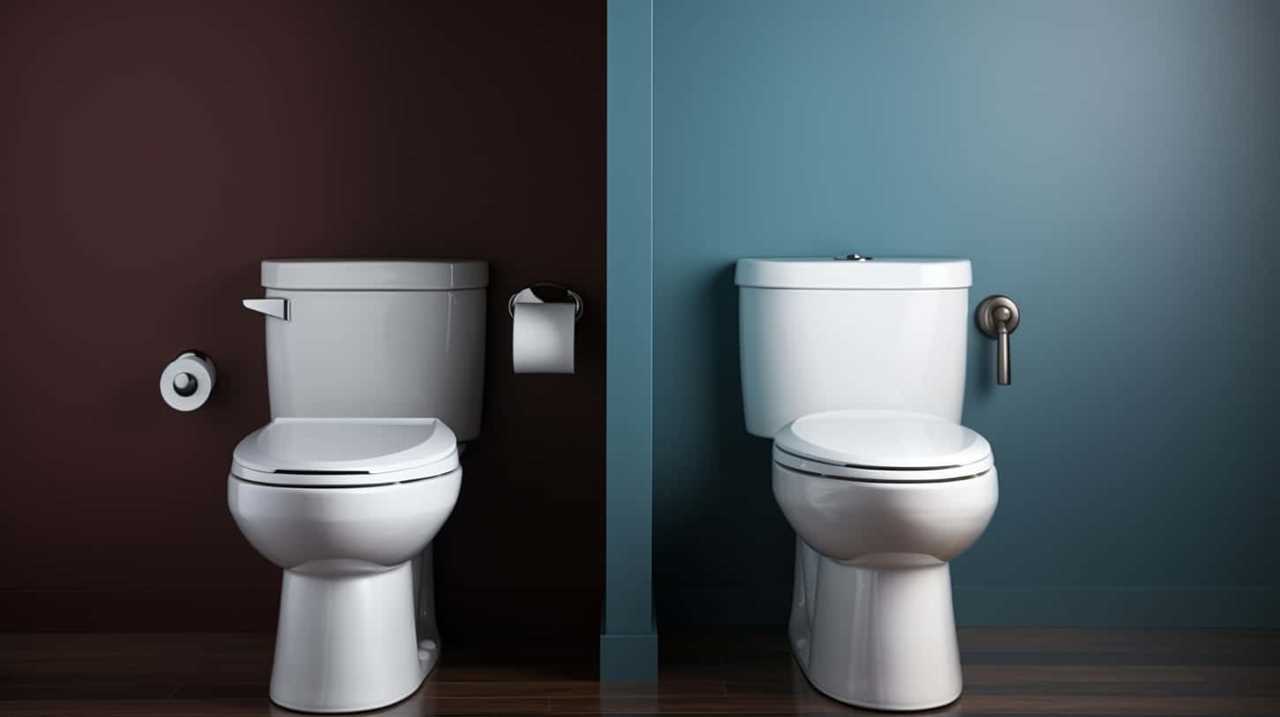
Tips for Reducing Water Consumption
To reduce water consumption, we can implement various strategies and habits that help conserve this valuable resource.
One effective way to reduce water waste is by using low-flow fixtures. These fixtures, such as low-flow toilets and showerheads, are designed to use less water without compromising functionality. By installing these fixtures in our homes, we can significantly reduce the amount of water we use on a daily basis.
Another conservation method is to be mindful of our water usage. Simple habits, such as turning off the faucet while brushing our teeth or shaving, can make a big difference in reducing water waste. Additionally, fixing any leaks in our plumbing system promptly can prevent water from being wasted unnecessarily.
Implementing water-saving practices in our outdoor spaces is also crucial. Watering our lawns and gardens during the early morning or late evening hours can minimize evaporation and ensure that the water is efficiently absorbed by the plants. Using mulch around plants can also help retain moisture in the soil, reducing the need for frequent watering.

Conserving water isn’t only beneficial for the environment but also for our wallets. By adopting these reduction strategies and incorporating water-saving habits into our daily routines, we can make a significant impact in reducing water waste and preserving this valuable resource for future generations.
Installing a Dual Flush Toilet
When it comes to water-saving toilet options, installing a dual flush toilet is a great choice.
With this type of toilet, you have the option to use a lower flush volume for liquid waste and a higher flush volume for solid waste.
When installing a dual flush toilet, it’s important to consider the plumbing requirements and the available space in your bathroom.

Water-Saving Toilet Options
We can save water by installing a dual flush toilet. These toilets have water-saving features that allow users to choose between a full flush and a half flush, depending on the waste being disposed of. The benefits of water efficient toilets are significant, especially for households looking to reduce their water consumption and lower their utility bills.
Here are three key advantages of installing a dual flush toilet:
- Reduced water usage: Dual flush toilets use significantly less water compared to traditional toilets, as the half flush option is designed for liquid waste, saving gallons of water with each use.
- Environmental impact: By conserving water, dual flush toilets help to alleviate the strain on water resources and reduce the energy required for water treatment and distribution.
- Cost savings: With lower water usage, households can see a noticeable reduction in their water bills over time.
Installing a dual flush toilet is a practical and effective way to contribute to water conservation efforts while enjoying the benefits of a more sustainable and cost-effective toilet system.
Installation Considerations and Tips
As we consider installing a dual flush toilet, it’s important to take into account various installation considerations and tips for a successful implementation.
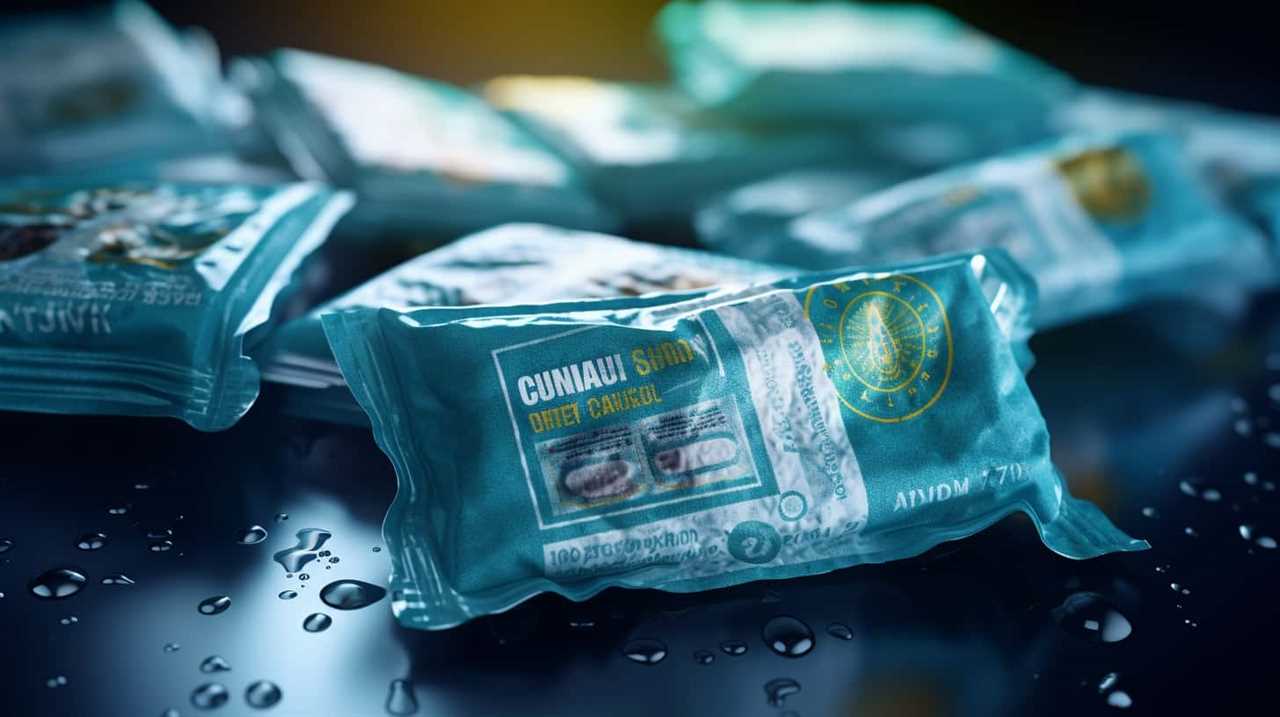
When it comes to installation techniques, it’s crucial to follow the manufacturer’s instructions carefully. Ensure that the toilet is properly leveled and securely anchored to the floor. Additionally, make sure that the water supply line is correctly connected and free from leaks.
Proper maintenance is key to ensure the longevity of your dual flush toilet. Regularly check for any signs of leakage or running water and promptly address any issues. It’s also recommended to clean the toilet regularly using non-abrasive cleaners to prevent buildup and maintain optimal performance.
Benefits of Using Low-Flow Toilets
By using low-flow toilets, we can significantly reduce the amount of water that’s consumed during each flush. This not only benefits the environment but also provides several advantages for homeowners.
- Markdown Bullet List:
- Water Conservation: Low-flow toilets are designed to use less water per flush, typically around 1.6 gallons or less. This can result in significant water savings over time, helping to conserve this valuable resource.
- Cost Savings: With reduced water usage, homeowners can also save money on their water bills. By installing low-flow toilets, the long-term savings can be substantial.
- Environmental Impact: By choosing low-flow toilet installation, individuals can contribute to water conservation efforts, reducing the strain on local water supplies and preserving ecosystems.
Using low-flow toilets not only promotes water conservation but also offers financial savings and helps protect the environment. With these benefits in mind, it’s clear that transitioning to low-flow toilets is a wise choice for those who desire mastery over their water usage.
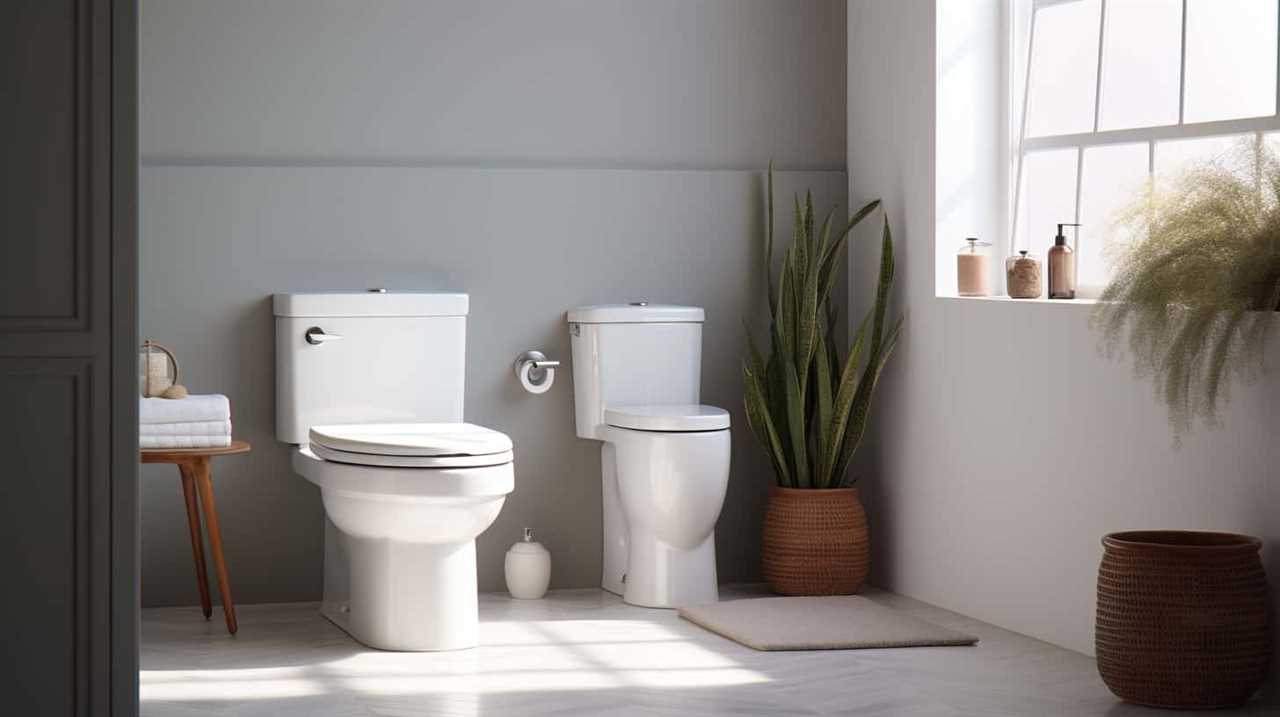
Now, let’s move on to the next section and learn how to check for toilet leaks.
How to Check for Toilet Leaks
To check for toilet leaks, let’s start by examining the water meter. Follow these steps to detect and fix toilet leaks:
- Turn off all faucets and water-using appliances in your home.
- Locate your water meter, usually found outside near the street or in your basement.
- Take note of the current reading on the water meter.
- Avoid using any water for the next few hours, including flushing the toilet.
- After a few hours, check the water meter reading again. If it has increased, it indicates a leak in your plumbing system.
- To confirm that the leak is in your toilet, turn off the toilet’s water supply valve.
- Wait for a few hours and check the water meter reading once more. If it remains unchanged, the leak is likely in your toilet.
Here is a table summarizing the steps for toilet leak detection:
| Steps | Actions |
|---|---|
| Step 1 | Turn off all faucets and water-using appliances |
| Step 2 | Locate the water meter |
| Step 3 | Note the current water meter reading |
| Step 4 | Avoid using water for a few hours |
| Step 5 | Check the water meter reading again |
| Step 6 | Turn off the toilet’s water supply valve |
| Step 7 | Check the water meter reading after a few hours |
Once you have confirmed a toilet leak, you can proceed with fixing it.

Importance of Regular Toilet Maintenance
Regular toilet maintenance is essential for ensuring optimal performance and preventing potential issues such as leaks and water wastage. By following a few simple toilet maintenance tips, you can keep your toilet in top shape and avoid costly repairs or replacements.
Here are some benefits of regular maintenance:
- Reduced water consumption: A well-maintained toilet can help conserve water by preventing leaks and ensuring efficient flushing. By regularly checking for leaks and repairing them promptly, you can save gallons of water every day.
- Improved hygiene: Regular cleaning and sanitization of your toilet bowl and tank can help maintain proper hygiene levels in your bathroom. Build-up of bacteria, mold, and mineral deposits can be minimized through regular maintenance, ensuring a clean and healthy environment.
- Extended lifespan: Taking care of your toilet through regular maintenance can extend its lifespan. By addressing minor issues promptly and conducting routine inspections, you can prevent major problems from occurring and prolong the lifespan of your toilet.
Water-Saving Toilet Accessories
When it comes to water-saving toilet accessories, there are several options available that can help conserve water and reduce water bills.
Efficient flushing mechanisms, such as dual flush options, allow users to choose between a full flush for solid waste and a partial flush for liquid waste, saving water with each use.

Additionally, water-saving toilet attachments like adjustable flappers and fill valves can be installed to optimize water usage and prevent unnecessary leaks.
Efficient Flushing Mechanisms
We frequently use water-saving toilet accessories to enhance the efficiency of flushing mechanisms. These accessories incorporate innovative water-saving technologies that help reduce water consumption while maintaining effective flushing performance.
Here are some examples of efficient flushing mechanisms:
- Dual-flush toilets: These toilets offer two flushing options, typically a partial flush for liquid waste and a full flush for solid waste. This allows users to choose the appropriate amount of water for each flush, resulting in significant water savings.
- Pressure-assist toilets: These toilets use a combination of water and air pressure to create a powerful flush. The pressurized water helps to clear waste more effectively, requiring less water per flush.
- Gravity-flush toilets with improved bowl designs: These toilets feature optimized bowl shapes and water flow patterns, maximizing the flushing efficiency while using minimal water.
Now, let’s explore another water-saving option: dual flush options.
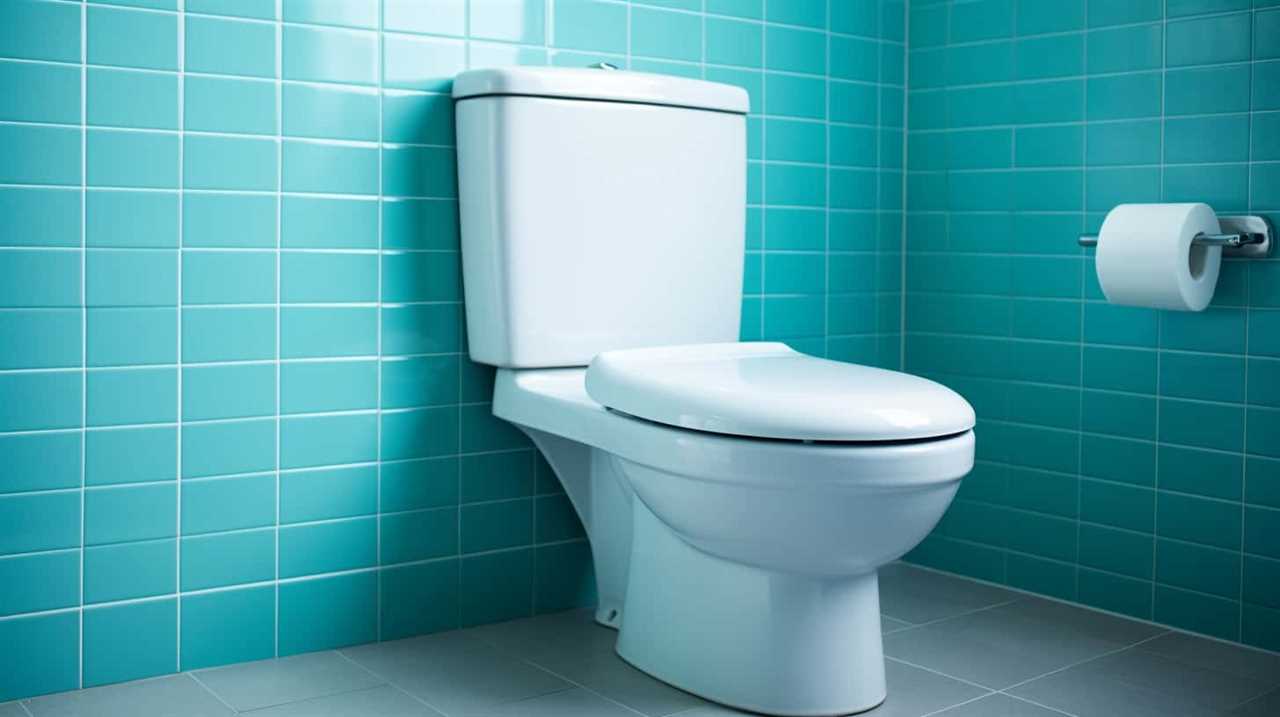
Dual Flush Options
To begin discussing Dual Flush Options (Water-Saving Toilet Accessories), let’s explore the benefits of incorporating these water-saving technologies into our flushing mechanisms.
Dual flush toilets offer several advantages over traditional single flush toilets. Firstly, they provide two flushing options: a full flush for solid waste and a half flush for liquid waste. This allows users to choose the appropriate amount of water needed for each flush, resulting in significant water savings. On average, dual flush toilets use 20% less water than their single flush counterparts.
Additionally, installing a dual flush toilet is relatively simple. It usually involves replacing the flush valve or the entire flush mechanism. However, it’s important to follow the manufacturer’s instructions and ensure proper installation to avoid any leaks or malfunctions.
Water-Saving Toilet Attachments
Water-saving toilet attachments, such as dual flush options, can significantly reduce the amount of water used during flushing. These water-saving toilet attachments offer several benefits for those looking to conserve water and reduce their environmental impact:

- Reduced Water Consumption: By using low flow toilets or installing water-saving toilet attachments, you can reduce the amount of water used per flush, saving gallons of water each day.
- Cost Savings: With decreased water consumption, you can also expect to see a decrease in your water bills, saving you money in the long run.
- Environmental Impact: By conserving water, you contribute to preserving this valuable resource and reducing the strain on water sources.
By incorporating water-saving toilet attachments, you can actively participate in water conservation efforts while enjoying the convenience of a fully functional toilet.
Now, let’s explore the role of toilet paper in water usage.
The Role of Toilet Paper in Water Usage
Toilet paper significantly contributes to the amount of water used when flushing a toilet. While it’s an essential item in maintaining hygiene and cleanliness, its usage can have a significant impact on water consumption. In recent years, there’s been increasing interest in finding toilet paper alternatives and reducing toilet paper usage to minimize water waste.
One way to reduce toilet paper usage is by exploring alternative options such as bidets or washlets. These devices use water to clean the user after using the toilet, eliminating the need for excessive amounts of toilet paper. Bidets and washlets have gained popularity due to their effectiveness in maintaining cleanliness while reducing the environmental impact of toilet paper production and consumption.

Another approach to reducing toilet paper usage is by using environmentally friendly and sustainable toilet paper options. These alternatives are typically made from recycled materials or bamboo, which require fewer resources to produce compared to traditional toilet paper. By opting for these eco-friendly options, individuals can contribute to water conservation efforts and minimize their ecological footprint.
In conclusion, toilet paper plays a significant role in water usage when flushing a toilet. Exploring toilet paper alternatives and adopting sustainable practices can help reduce water waste associated with toilet paper consumption. By making conscious choices, we can contribute to water conservation and promote a more sustainable future.
Now, let’s debunk some common myths about flushing and water consumption.
Common Myths About Flushing and Water Consumption
When it comes to flushing a toilet, there are several common myths circulating about water consumption that need to be addressed. To ensure that you have accurate information about water conservation techniques, it’s important to debunk these water-saving myths.
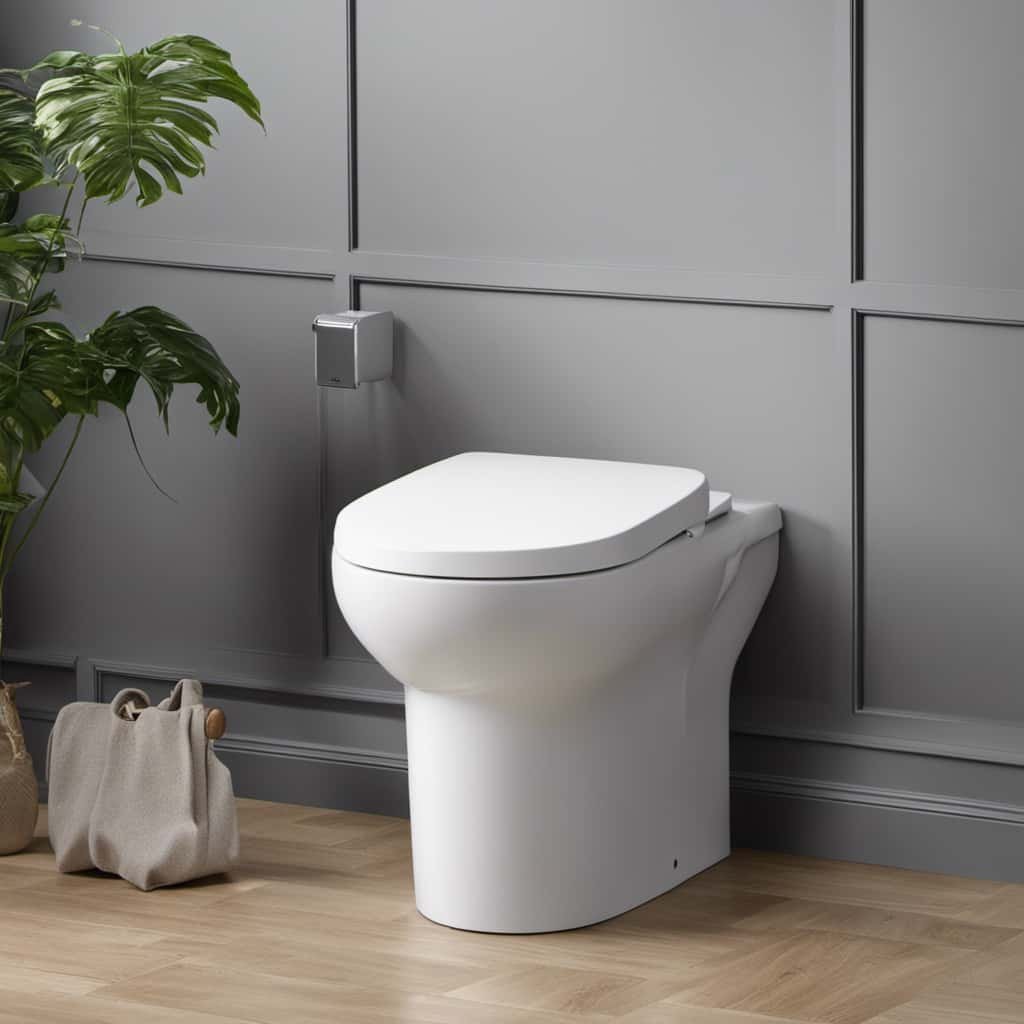
Here are three commonly believed misconceptions:
- Myth 1: ‘Flushing with hot water saves more water.’ Contrary to popular belief, using hot water doesn’t result in water conservation. In fact, it can actually increase energy consumption due to the need for water heating.
- Myth 2: ‘Dual-flush toilets are always more water-efficient.’ While dual-flush toilets do have the potential to save water, it largely depends on the user’s behavior. Improper use or excessive flushing can negate the water-saving benefits.
- Myth 3: ‘Using a brick or weight in the toilet tank saves water.’ This myth suggests that adding a brick or weight to the tank reduces the amount of water used per flush. However, it can interfere with the proper functioning of the toilet and may lead to costly repairs.
Now that we’ve debunked these water-saving myths, let’s move on to the next section where we discuss taking steps towards water conservation.
Conclusion: Taking Steps Towards Water Conservation
Now let’s discuss some simple water-saving techniques that can help us conserve water in our daily lives.
By implementing these methods, we can contribute to the environmental benefits of water conservation, such as preserving natural resources and reducing water pollution.

Moreover, these practices can also have a positive impact on our water bills, as reducing water consumption leads to lower costs.
Simple Water-Saving Techniques
As we explore simple water-saving techniques, it’s important to consider taking steps towards water conservation. By implementing these techniques, not only will you save water, but you’ll also contribute to the preservation of this valuable resource.
Here are some effective water-saving techniques that you can easily apply in your daily life:
- Install low-flow showerheads and faucets: These devices reduce water usage without sacrificing water pressure, allowing you to save gallons of water every day.
- Fix leaks promptly: A dripping faucet can waste up to 20 gallons of water per day. Regularly check for leaks and repair them as soon as possible to prevent unnecessary water wastage.
- Use a rainwater harvesting system: Collecting rainwater from your roof and storing it for later use can significantly reduce your reliance on municipal water supplies.
Environmental Benefits of Conservation
To fully understand the environmental benefits of conservation, it’s important for us to recognize the positive impact we can make on water resources by taking steps towards water conservation. Implementing water conservation techniques offers several benefits that can contribute to the preservation and sustainability of our water supply.

One of the main benefits of water conservation is the reduction of water scarcity. By using water more efficiently, we can decrease the strain on water sources and ensure a more reliable water supply for future generations.
Additionally, water conservation helps to conserve energy and reduce greenhouse gas emissions. This is because less energy is required to treat and distribute water when we use it more efficiently.
Furthermore, water conservation can also lead to financial savings. By reducing water consumption, households and businesses can lower their water bills and decrease the overall demand for water infrastructure investment.
Impact on Water Bills
By taking steps towards water conservation, we can significantly reduce our water bills. Implementing water saving strategies not only benefits the environment but also has a positive impact on household budgets.
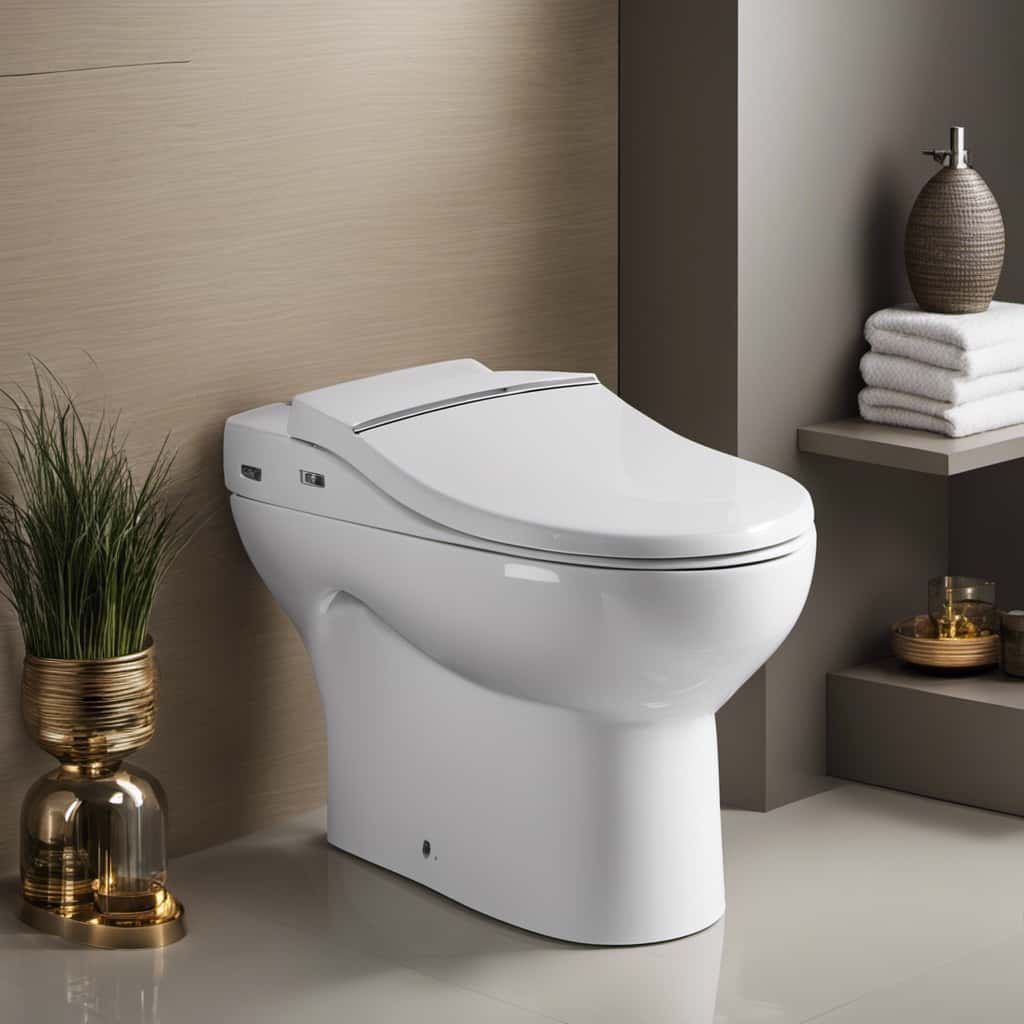
Here are three effective strategies to help you save water and lower your water bills:
- Install low-flow fixtures: Replace old showerheads, faucets, and toilets with low-flow alternatives. These fixtures are designed to use less water without compromising performance.
- Fix leaks promptly: Even a small leak can waste a significant amount of water over time. Regularly check for leaks in faucets, toilets, and pipes, and repair them promptly to avoid unnecessary water loss.
- Adopt efficient irrigation practices: Watering your garden or lawn efficiently can save a substantial amount of water. Consider using drip irrigation systems or watering during the cooler parts of the day to reduce evaporation.
Frequently Asked Questions
Can Using a Low-Flow Toilet Really Help Save Water?
Using a low-flow toilet can indeed help save water. These water-saving toilet options are designed to use less water with each flush, reducing water consumption and promoting sustainability.
The benefits of low flow toilets go beyond just water conservation. They also contribute to lower water bills and help to preserve our precious water resources.
How Can I Reduce the Water Consumption of My Toilet?
To reduce toilet water usage, we can implement various water-saving tips.
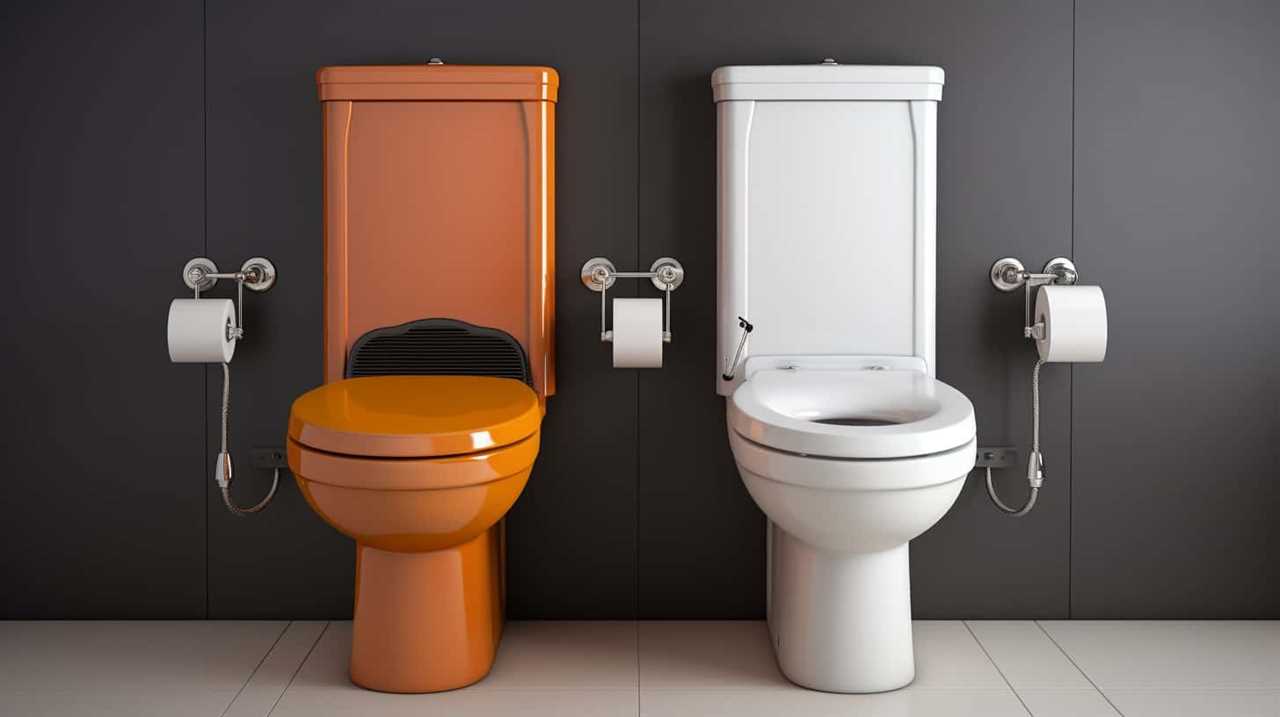
One effective method is installing a low-flow toilet, which uses less water per flush.
Another option is adjusting the water level in the tank to reduce the amount used during each flush.
Additionally, using a dual-flush toilet allows for different water volumes depending on the waste type.
Regular maintenance, such as fixing leaks promptly, is crucial to conserve water and ensure optimal toilet efficiency.
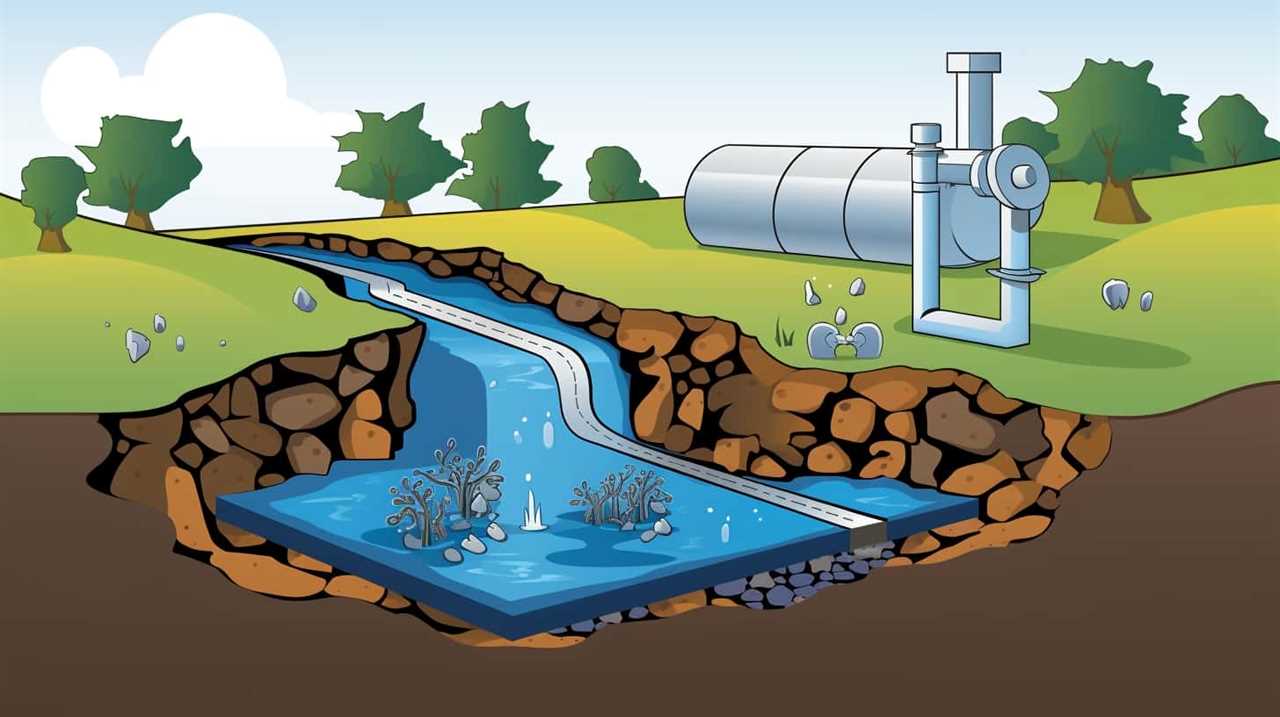
Are There Any Water-Saving Technologies Available for Toilets?
When it comes to water-saving technologies for toilets, there are some innovative solutions available.
Dual flush toilets are a prime example. These toilets have two flush options – a partial flush for liquids and a full flush for solids. This allows us to conserve water by using the appropriate flush for each situation.
The benefits of dual flush toilets are twofold: they reduce water consumption and lower utility bills. Making this switch is a smart move for those seeking mastery in water conservation.
How Can I Check for Toilet Leaks and Why Is It Important?
Toilet leak detection is crucial for water conservation. It allows us to identify and fix leaks promptly, preventing wastage. Regularly checking for leaks can be done by adding dye tablets or food coloring to the toilet tank and observing if the color seeps into the bowl without flushing.

Efficient water conservation methods, such as dual-flush toilets or low-flow toilets, can further reduce water usage. By being proactive in leak detection and utilizing water-saving technologies, we can contribute to a sustainable future.
What Are Some Common Myths About Flushing and Water Consumption?
Toilet flushing myths and debunking flushing misconceptions are important topics to address. There are several common misconceptions surrounding water consumption and flushing practices that need clarification.
By dispelling these myths, we can better understand the true impact of flushing on water usage. It’s crucial to provide accurate information to help people make informed decisions about their water consumption habits.
Let’s explore some of these myths and set the record straight.

Conclusion
In conclusion, understanding the water consumption of flushing a toilet is crucial for water conservation efforts. By considering factors such as toilet models, water-saving technologies, and toilet paper usage, we can make informed choices to reduce our water consumption.
Don’t let common myths mislead you – taking steps towards water conservation can have a significant impact on both the environment and your water bill.
Let’s work together to make a difference and preserve this precious resource.
With an impeccable eye for detail and a passion for bathroom-related, Ava leads our editorial team gracefully and precisely.
Under her guidance, Best Modern Toilet has flourished as the go-to resource for modern bathroom enthusiasts. In her free time, you might find Ava exploring antique shops and looking for vintage bathroom fixtures to add to her collection.
FAQ - Advanced Bathroom Queries
Why Won’t My Toilet Flush Without Power

If you’ve ever been stuck in a challenging situation during a power outage, frantically trying to figure out why your toilet isn’t flushing, don’t worry – we’re here to explain this common dilemma.
In this article, we’ll explore the role of electricity in toilet flushing and delve into the components of a power-dependent flushing system. We’ll also uncover the reasons behind toilet flushing failure during power outages and provide alternative methods to ensure a functional toilet, even without power.
So, let’s dive in and master the art of flushing without electricity!
Key Takeaways
- Electricity is essential for the flush mechanism of modern toilets.
- Power outages can disrupt the functioning of the components that control flushing.
- Alternative methods for flushing a toilet without power include manually filling the tank, pouring water into the bowl, or using portable toilet options.
- Preparing for power outages involves installing backup power sources, stocking up on water, considering water-saving toilets, and educating oneself on alternative flushing methods.
The Role of Electricity in Toilet Flushing
In our experience, the main role of electricity in toilet flushing is through the operation of the electrically-powered flush mechanism. This mechanism is responsible for initiating the flushing action by activating the water flow and creating the necessary pressure to remove waste from the bowl.

The impact of water pressure on toilet flushing can’t be overstated. Adequate water pressure ensures a strong and efficient flush, while low water pressure can result in incomplete waste removal and potential clogs.
The history of electricity in toilet technology dates back to the early 20th century when electrically-powered flush mechanisms were first introduced. Since then, advancements in technology have led to more efficient and effective flushing systems, improving overall toilet performance.
Understanding the role of electricity in toilet flushing is crucial for maintaining a properly functioning toilet system.
Components of a Power-Dependent Flushing System
To understand the components of a power-dependent flushing system, we need to examine the inner workings of the toilet. Power saving toilet technology has become increasingly popular due to its ability to reduce energy consumption and minimize the impact of power outages on water pressure. Let’s take a closer look at the key components involved in this system.

| Component | Function |
|---|---|
| Flapper valve | Controls the release of water from the tank into the bowl |
| Fill valve | Regulates the water level in the tank |
| Flush valve | Opens to allow water to flow into the bowl during flushing |
During a power outage, the lack of electricity can disrupt the functioning of these components, particularly the flapper valve. Without power, the flapper valve may fail to open, preventing the water from being released into the bowl. Additionally, the fill valve may not be able to replenish the water in the tank, leading to decreased water pressure and a weaker flush. Understanding these components helps us comprehend why a toilet may not flush without power.
Common Reasons for Toilet Flushing Failure During Power Outages
When power outages occur, we often experience toilet flushing failure due to several common reasons. One of the main causes is the reliance on electricity for the flushing mechanisms of modern toilets. These mechanisms, such as electric pumps or pressure-assisted systems, require power to operate. Without electricity, these mechanisms can’t generate the necessary force to flush the toilet effectively.
Another reason for flushing failure during power outages is a clogged or malfunctioning toilet. Blockages in the pipes or a faulty flush valve can impede the flushing process, even when power is available. Troubleshooting toilet flushing issues should involve checking for blockages, ensuring the flush valve is functioning properly, and considering alternative methods for flushing.
Understanding these common reasons for toilet flushing failure is crucial in finding solutions and ensuring proper functionality, especially during power outages. In the next section, we’ll explore alternative methods for flushing a toilet without power.

Alternative Methods for Flushing a Toilet Without Power
During power outages, when the reliance on electricity for toilet flushing mechanisms renders them ineffective, it’s important to consider alternative methods for flushing a toilet without power.
In emergency situations, there are several solutions that can be implemented to ensure proper sanitation and water conservation.
One option is to manually fill the toilet tank with water using a bucket or container. By pouring the water into the bowl, it will create enough force to flush the waste down the drain.
Another method is to use a portable camping toilet or a portable toilet seat that can be placed on top of a bucket or other container.

These emergency solutions can help maintain hygiene and prevent the spread of diseases during power outages, while also conserving water.
Preparing for Power Outages: Tips to Ensure a Functional Toilet
In order to prepare for power outages and ensure a functional toilet, we can continue the discussion by exploring some helpful tips. Here are three key suggestions to enhance toilet hygiene and emergency preparedness:
- Install a backup power source: Consider investing in a generator or a battery backup system to keep essential appliances, including your toilet, running during power outages. This will allow you to maintain proper sanitation even when the electricity is down.
- Stock up on water: Have an adequate supply of water stored for emergencies. You can use this water to manually flush the toilet by pouring it directly into the bowl. Aim for at least one gallon of water per person per day to cover your basic needs.
- Learn manual flushing techniques: Familiarize yourself with alternative methods for flushing the toilet without power. For instance, you can manually fill the toilet tank using a bucket of water to create enough pressure for a flush.
Frequently Asked Questions
How Does a Power Outage Affect the Operation of a Toilet?
During a power outage, a toilet may not flush because it relies on electricity to activate the flushing mechanism. Without power, the backup generator or emergency plumbing may be needed to restore functionality.
Can I Manually Flush a Toilet That Is Dependent on Electricity?
Yes, you can manually flush a toilet that relies on electricity. By using the emergency toilet flush or manually filling the tank and operating the lever, you can still achieve a functioning flush without power.

Are There Any Alternative Methods to Flush a Toilet Without Power?
Emergency toilet solutions include DIY toilet flush options. When there is no power, alternative methods can be used to manually flush a toilet. These methods ensure functionality during emergencies or power outages.
What Are the Common Reasons for Toilet Flushing Failure During a Power Outage?
The common reasons for toilet flushing failure during a power outage include a lack of power to operate the toilet flushing mechanism and potential issues with the water supply. Troubleshooting toilet flushing may involve checking the power source and ensuring proper water flow.
How Can I Prepare My Toilet for a Power Outage to Ensure It Remains Functional?
To prepare our toilet for a power outage and ensure it remains functional, we can take measures such as installing a backup generator, using water conservation techniques, and considering portable toilet options.
Conclusion
In conclusion, power outages can disrupt the functioning of toilets, which rely on electricity for flushing.

One interesting statistic to consider is that during a power outage, the average person flushes the toilet around 2,500 times per year.
This visualizes the potential inconvenience and importance of having alternative methods in place to ensure a functional toilet during such situations.
With an impeccable eye for detail and a passion for bathroom-related, Ava leads our editorial team gracefully and precisely.
Under her guidance, Best Modern Toilet has flourished as the go-to resource for modern bathroom enthusiasts. In her free time, you might find Ava exploring antique shops and looking for vintage bathroom fixtures to add to her collection.
FAQ - Advanced Bathroom Queries
Are You Allowed to Flush Toilet Paper

Are we overlooking the consequences of flushing toilet paper?
In this article, we explore the environmental consequences and plumbing issues associated with this common practice.
We’ll also delve into alternatives and proper disposal methods recommended by plumbing and environmental experts.
Join us as we navigate the complexities of this topic and gain a deeper understanding of whether we are allowed to flush toilet paper.

Get ready to master the art of responsible waste management.
Key Takeaways
- Flushing toilet paper contributes to water scarcity and wastes valuable water resources.
- Flushing too much toilet paper can lead to clogging and damage to sewage systems.
- Composting toilets and bidet attachments are sustainable alternatives to flushing toilet paper.
- Proper disposal methods, such as recycling and composting, help reduce the environmental impact of toilet paper.
Environmental Impact of Flushing Toilet Paper
Flushing toilet paper has a significant environmental impact, and we should be aware of its consequences. When we flush toilet paper, it contributes to two major environmental issues: water scarcity and deforestation.
Firstly, the production of toilet paper requires a significant amount of water. With water scarcity becoming a growing concern around the world, it’s important to recognize that flushing toilet paper wastes this valuable resource.
Secondly, the production of toilet paper contributes to deforestation. Trees are cut down to make pulp, which is then processed into toilet paper. This deforestation not only destroys ecosystems and habitats but also reduces the Earth’s ability to absorb carbon dioxide.

Therefore, it’s crucial that we consider alternative options, such as using bidets or recycled toilet paper, to minimize the environmental impact of flushing toilet paper.
Plumbing Issues Caused by Flushing Toilet Paper
Although it may seem convenient, flushing toilet paper can lead to various plumbing issues. One of the most common problems is toilet paper clogging. When too much toilet paper is flushed, it can accumulate and create blockages in the pipes. This can result in toilets that do not flush properly or even overflowing toilets. In addition to clogging, flushing toilet paper can also cause damage to the sewage system. The fibers in toilet paper do not break down easily, especially in older plumbing systems. Over time, these fibers can build up and cause damage to the pipes, leading to costly repairs. To illustrate the potential consequences of flushing toilet paper, refer to the table below:
| Plumbing Issues Caused by Flushing Toilet Paper |
|---|
| Toilet paper clogging |
| Sewage system damage |
To avoid these problems, it is best to dispose of toilet paper in a waste bin instead of flushing it. This simple change in behavior can help maintain the integrity of your plumbing system and prevent unnecessary expenses.
Alternatives to Flushing Toilet Paper
To avoid the plumbing issues caused by flushing toilet paper, we can explore alternative methods of disposal.

One such alternative is the use of composting toilets. Composting toilets are designed to efficiently break down human waste, including toilet paper, using natural processes. These toilets separate solid waste from liquid waste and utilize aerobic bacteria to decompose the organic matter. The resulting compost can then be used as a nutrient-rich fertilizer for plants.
Another alternative is the use of bidet attachments. Bidets are devices that use water to clean oneself after using the toilet. Bidet attachments can be easily installed on existing toilets and provide a more hygienic and environmentally friendly option.
Proper Disposal Methods for Toilet Paper
We can dispose of toilet paper properly by simply throwing it in the designated trash bin.
However, there are also other environmentally friendly options for toilet paper disposal. One option is toilet paper recycling. Some companies specialize in recycling toilet paper, where it’s collected, processed, and turned into new paper products. This not only reduces waste but also saves trees and energy.

Another option is composting toilet paper. Composting toilet systems are designed to break down organic waste, including toilet paper, into nutrient-rich compost. This compost can then be used as fertilizer for gardens and plants. It’s important to note that not all toilet paper is suitable for composting, so it’s essential to choose toilet paper that’s specifically labeled as compostable.
Recommendations From Plumbing and Environmental Experts
According to plumbing and environmental experts, our recommendation is to consult with your local water and sanitation authorities for guidelines on flushing toilet paper. These authorities are knowledgeable about the specific waste management systems in your area and can provide you with accurate information on how to properly dispose of toilet paper.
It’s important to follow their guidelines to ensure the efficient and environmentally friendly management of toilet paper waste.
Additionally, it’s worth considering eco-friendly toilet paper options, which are becoming increasingly popular. These options are made from recycled materials or sustainable sources, reducing the environmental impact associated with traditional toilet paper production.

Frequently Asked Questions
Is It True That Flushing Toilet Paper Can Cause Plumbing Issues?
Flushing toilet paper can cause plumbing issues. The plumbing consequences include clogged pipes and potential damage to the septic system. It is important to properly dispose of toilet paper in a waste bin to prevent these problems.
What Are Some Alternative Options to Flushing Toilet Paper?
When it comes to the question of alternative options to flushing toilet paper, one option that comes to mind is using a bidet. The benefits of using bidets include improved hygiene and reduced paper waste.
How Should Toilet Paper Be Properly Disposed Of?
Toilet paper should be properly disposed of by either recycling it or composting it. Recycling toilet paper helps to reduce waste, while composting toilet paper allows it to break down naturally and become a nutrient-rich soil amendment.
What Are the Recommendations From Plumbing Experts Regarding Toilet Paper Usage?
Plumbing experts recommend considering toilet paper alternatives and eco-friendly options. It’s essential to be mindful of proper disposal methods and not flush non-flushable items to prevent clogs and damage to the plumbing system.

How Does Flushing Toilet Paper Impact the Environment?
Flushing toilet paper can have a negative impact on the environment. Toilet paper production contributes to deforestation, as trees are cut down to make it. Proper disposal methods, such as using a designated bin, can help mitigate these effects.
Conclusion
In conclusion, it’s crucial to consider the environmental impact and potential plumbing issues caused by flushing toilet paper.
Instead, explore alternatives such as bidets or wet wipes that can be disposed of properly.
By doing so, we can help preserve our planet and avoid costly plumbing repairs.

Remember, like a drop in a vast ocean, our small choices can create ripples of positive change.
With an impeccable eye for detail and a passion for bathroom-related, Ava leads our editorial team gracefully and precisely.
Under her guidance, Best Modern Toilet has flourished as the go-to resource for modern bathroom enthusiasts. In her free time, you might find Ava exploring antique shops and looking for vintage bathroom fixtures to add to her collection.
FAQ - Advanced Bathroom Queries
Can You Flush Toilet if Water Is off

Picture a scenario in which the water in your household suddenly vanishes, rendering you unable to flush the toilet.
Don’t panic! In this article, we will explore various methods to overcome this challenge and keep your bathroom functioning smoothly.
From understanding different types of toilets to utilizing alternative water sources and even resorting to using buckets or containers, we will equip you with the knowledge to handle such situations with ease.
Prepare for emergencies and master the art of flushing without water!

Key Takeaways
- Understanding the type of toilet you have is crucial in determining if it can be flushed when the water is off.
- Alternative water sources like rainwater harvesting and greywater systems can be used for flushing toilets during water shortages.
- Regular maintenance of toilets is important to ensure proper functioning and longevity of the system.
- Emergency preparedness involves keeping emergency supplies, having backup water sources, learning makeshift plumbing techniques, and staying informed about local emergency protocols and resources.
Type of Toilet Matters
We found that the type of toilet you have will determine whether or not you can flush it when the water is off. This is particularly relevant for portable toilets and composting toilets.
Portable toilets, which are commonly used in camping or outdoor events, typically have their own built-in flushing system that doesn’t rely on a constant water supply. Therefore, even if the water is turned off, you can still flush these toilets.
On the other hand, composting toilets, which are designed to break down waste into compost, don’t require water for flushing. Instead, they use a dry composting process, making them completely independent of water supply.
Understanding the type of toilet you have is crucial in determining whether or not you can flush it when the water is off.

Now, let’s explore alternative water sources for flushing toilets.
Alternative Water Sources
Now let’s explore the alternative water sources available for flushing toilets when water is turned off. When faced with a water shortage, it’s important to consider rainwater harvesting and water conservation techniques as viable options. Rainwater harvesting involves collecting and storing rainwater for later use. This can be done by installing rain barrels or cisterns that capture rainwater from rooftops and divert it to a storage container. To give you a better understanding of the options available, here is a table outlining some alternative water sources for flushing toilets:
| Alternative Water Sources | Description |
|---|---|
| Rainwater harvesting | Collecting and storing rainwater for later use. |
| Water conservation | Implementing strategies to reduce water usage. |
Using a Bucket or Container
To continue the discussion from the previous subtopic, let’s explore how we can utilize a bucket or container to flush the toilet when the water is turned off.
When it comes to using a bucket or container for flushing, there are a few key points to consider:

- Bucket vs. container: Both options can be used effectively for flushing. A bucket offers a larger capacity, allowing for multiple flushes with less trips to refill. On the other hand, a container may be more convenient to carry and pour into the toilet.
- Water conservation methods: Using a bucket or container for flushing helps conserve water during periods of water shortage. By manually pouring water into the toilet, you can avoid using unnecessary amounts of water from alternative sources.
- Proper handling: It’s important to handle the bucket or container with care to avoid spills and ensure efficient flushing. Be mindful of the weight and pour steadily to avoid accidents.
- Cleaning and sanitizing: After using a bucket or container to flush the toilet, it’s crucial to clean and sanitize them thoroughly to maintain hygiene and prevent the spread of bacteria.
In order to maintain a functional toilet system, it’s important to regularly maintain and inspect the various components. Now, let’s move on to discussing the importance of regular maintenance.
Importance of Regular Maintenance
Regular maintenance of a toilet system is crucial for ensuring its proper functioning and longevity. Neglecting regular maintenance can lead to various issues such as clogs, leaks, and inefficiency. Hiring professionals for toilet maintenance offers numerous benefits. They have the expertise and tools to identify and fix problems before they escalate, saving you time, money, and frustration. Additionally, professionals can provide valuable advice on how to optimize your toilet system’s performance and extend its lifespan.
To illustrate the importance of regular maintenance, consider the following common mistakes that homeowners make:
| Common Maintenance Mistakes | Consequences |
|---|---|
| Neglecting to clean the toilet regularly | Accumulation of dirt, stains, and unpleasant odors |
| Failing to check and replace worn-out parts | Increased risk of leaks and decreased efficiency |
| Ignoring unusual noises or slow flushing | Potential for major clogs or system failures |
Emergency Preparedness Tips
After prioritizing regular maintenance, it’s important to be prepared for emergencies in case the water to your toilet is shut off. Here are four essential emergency preparedness tips to help you navigate such situations:

- Emergency Supplies: Keep a stash of essential items such as bottled water, non-perishable food, flashlights, batteries, and a portable radio. These supplies will come in handy during a water outage or any other emergency.
- Water Storage: Consider storing additional water in large containers or water storage tanks. This will ensure you have access to water for flushing the toilet and other necessary uses during a water shutdown.
- Sanitation Alternatives: In the absence of water, utilize alternative sanitation methods, such as using disposable hygiene products or keeping a supply of sanitary wipes and hand sanitizer.
- Communication Plans: Develop a communication plan with your household members to stay connected during emergencies. Establish a meeting point and assign responsibilities to ensure everyone’s safety and well-being.
Frequently Asked Questions
Can I Flush My Toilet if the Water Supply to My House Is Temporarily Shut Off?
Yes, we can flush the toilet if the water is temporarily shut off. There are alternative toilet flushing techniques, such as pouring a bucket of water into the bowl. It’s important to conserve water in these situations.
What Types of Toilets Are More Likely to Be Able to Flush Without Water?
Waterless toilets, such as composting toilets and incinerating toilets, are more likely to be able to flush without water. DIY methods for flushing without water include pouring a bucket of water into the bowl.
Are There Any Alternative Water Sources That Can Be Used to Flush the Toilet if the Water Is Off?
Yes, there are alternative water sources that can be used to flush the toilet if the water is off. Options include using stored rainwater, melted snow, or even water from other sources like a swimming pool, as long as water conservation practices are followed.
Can I Use a Bucket or Container of Water to Manually Flush the Toilet?
Yes, we can use a bucket or container of water to manually flush the toilet. It’s a common alternative when the water is off. Just pour the water forcefully into the bowl to create a flushing effect.

Why Is Regular Maintenance of the Toilet Important for Its Proper Functioning, Especially During Water Shortages or Emergencies?
Regular toilet maintenance is crucial for proper functioning, especially during water shortages or emergencies. By keeping the toilet clean, checking for leaks, and avoiding flushing non-flushable items, you can prevent clogs and ensure it works efficiently.
Conclusion
So, the next time you find yourself in a situation where the water is off and you need to use the toilet, remember that it’s not the end of the world.
With the right type of toilet, alternative water sources, and a little improvisation, you can still flush and maintain your sanity.
Just don’t forget the importance of regular maintenance and emergency preparedness.

After all, who knew that something as simple as flushing a toilet could become a lesson in survival?
With an impeccable eye for detail and a passion for bathroom-related, Ava leads our editorial team gracefully and precisely.
Under her guidance, Best Modern Toilet has flourished as the go-to resource for modern bathroom enthusiasts. In her free time, you might find Ava exploring antique shops and looking for vintage bathroom fixtures to add to her collection.
-

 Reviews2 months ago
Reviews2 months agoBest Toilet Air Freshener: Top 10 Picks for a Fresh-Smelling Bathroom [2024]
-

 FAQ - Advanced Bathroom Queries3 months ago
FAQ - Advanced Bathroom Queries3 months agoGuide: How to Use Drano Max Gel in Your Toilet
-

 FAQ - Advanced Bathroom Queries1 month ago
FAQ - Advanced Bathroom Queries1 month agoWhich Countries Use Bidets the Most
-

 FAQ - Advanced Bathroom Queries3 months ago
FAQ - Advanced Bathroom Queries3 months agoWhy Does My Poop Leave Streaks in the Toilet
-

 Reviews2 months ago
Reviews2 months agoBest Waterless Toilets: Top Options for Eco-Friendly Bathrooms [2024]
-

 Buying Guides2 months ago
Buying Guides2 months agoWhat to Do When You Accidentally Flushed Something Down the Toilet
-

 FAQ - Advanced Bathroom Queries3 months ago
FAQ - Advanced Bathroom Queries3 months agoHow Do Toilets Work in Bali
-

 FAQ - Advanced Bathroom Queries3 months ago
FAQ - Advanced Bathroom Queries3 months agoWhat to Do if You Accidentally Flushed Something Down the Toilet





















